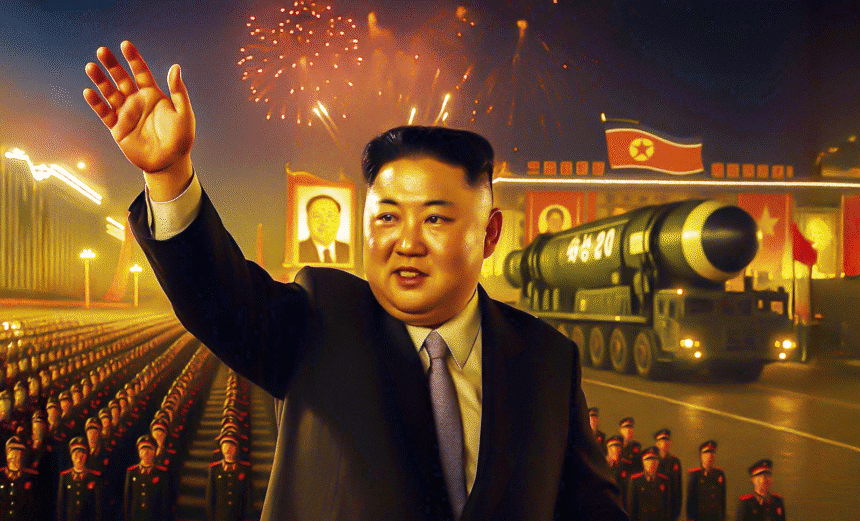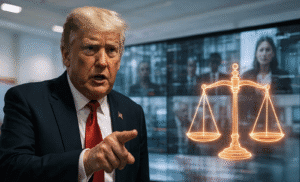North Korea commemorated the 80th anniversary of its ruling Workers’ Party of Korea (WPK) with an extravagant display of power and patriotism, underscoring its leadership’s grip on the country and its ambitions on the world stage. The celebrations centered on a massive nighttime military parade in Kim Il Sung Square, the historic heart of Pyongyang, attended by tens of thousands of soldiers, officials, and civilians. The parade capped several days of events that included mass gymnastics, cultural performances, and public rallies, transforming the capital into a stage for one of the most elaborate national displays in recent years.
October 10 marks Party Foundation Day, a public holiday celebrating the formation in 1945 of the organization that evolved into the present-day WPK. For the North Korean leadership, milestone anniversaries such as this one carry immense symbolic weight. They serve to reinforce loyalty to the Kim family, display the regime’s technological and military prowess, and reaffirm the country’s resilience amid sanctions and isolation. The 80th anniversary was especially significant for Kim Jong Un, who has sought to portray himself as the rightful heir to his father and grandfather’s revolutionary legacy while steering North Korea through a period of renewed geopolitical tension.
At the parade, Kim Jong Un presided over proceedings from a grandstand adorned with red banners and portraits of his predecessors, Kim Il Sung and Kim Jong Il. In a fiery speech, Kim hailed the Workers’ Party’s “flawless history” and described North Korea as an “invincible fortress” capable of destroying any threat. He called on the military to “defend socialism with revolutionary faith” and praised the country’s scientists and engineers for advancing weapons technology. His remarks were punctuated by cheering crowds and synchronized chants of loyalty, typical of North Korean state ceremonies that blend spectacle with political messaging.
The event also carried a strong international dimension. Among the foreign dignitaries in attendance were Chinese Premier Li Qiang, former Russian President Dmitry Medvedev, and Vietnamese Communist Party leader To Lam. Their presence underscored North Korea’s effort to project solidarity with its traditional allies, China, Russia, and Vietnam, at a time when Pyongyang is deepening ties with Moscow and Beijing amid escalating tensions with the West. Kim Jong Un reportedly held private talks with Medvedev, discussing expanded military and economic cooperation. Analysts view this as a signal that North Korea is positioning itself more firmly within a Sino-Russian strategic bloc, counterbalancing Western sanctions and diplomatic isolation.
The military parade itself was a powerful statement. The highlight was the unveiling of the Hwasong-20, a newly developed solid-fuel intercontinental ballistic missile (ICBM) that state media described as “the most powerful nuclear strategic weapon system” in North Korea’s arsenal. Mounted on an 11-axle transporter, the missile’s debut demonstrated the regime’s determination to expand its long-range strike capability. Alongside the ICBM, the parade featured hypersonic missiles, long-range cruise missiles, drones, and advanced armored vehicles, all paraded before a backdrop of synchronized fireworks and patriotic anthems. Despite the impressive visuals, experts caution that North Korea’s claims about its new missile’s performance, particularly regarding accuracy and re-entry technology, remain unverified.
Historically, the WPK traces its roots to October 1945, when the North Korea Bureau of the Communist Party was founded. The party later merged with southern factions in 1949 to form the current Workers’ Party of Korea. Over eight decades, the Kim dynasty has used such anniversaries from the 10th to the 70th to consolidate political authority, promote ideological unity, and launch major infrastructure or defense initiatives. Past anniversaries have seen the unveiling of monumental projects, such as Pyongyang’s high-rise residential complexes and missile test declarations, often timed to coincide with the party’s founding commemorations.
This year’s 80th anniversary comes at a pivotal moment for North Korea. The country remains under extensive international sanctions due to its nuclear and missile programs and faces persistent food and energy shortages. Yet Kim Jong Un continues to frame these hardships as tests of revolutionary endurance. Through the anniversary celebrations, he sought to project confidence, unity, and defiance, both to his people and to the world. For ordinary North Koreans, the grand pageantry serves as both a display of national pride and a reminder of the regime’s control over every aspect of public life.
The spectacle in Pyongyang thus represented more than a commemoration of the party’s founding; it was a reaffirmation of North Korea’s identity as a state built on military strength, ideological loyalty, and dynastic continuity. Eighty years after its inception, the Workers’ Party remains the central pillar of power in one of the world’s most secretive nations, and Kim Jong Un appears determined to ensure that it continues to define North Korea’s path for decades to come.













